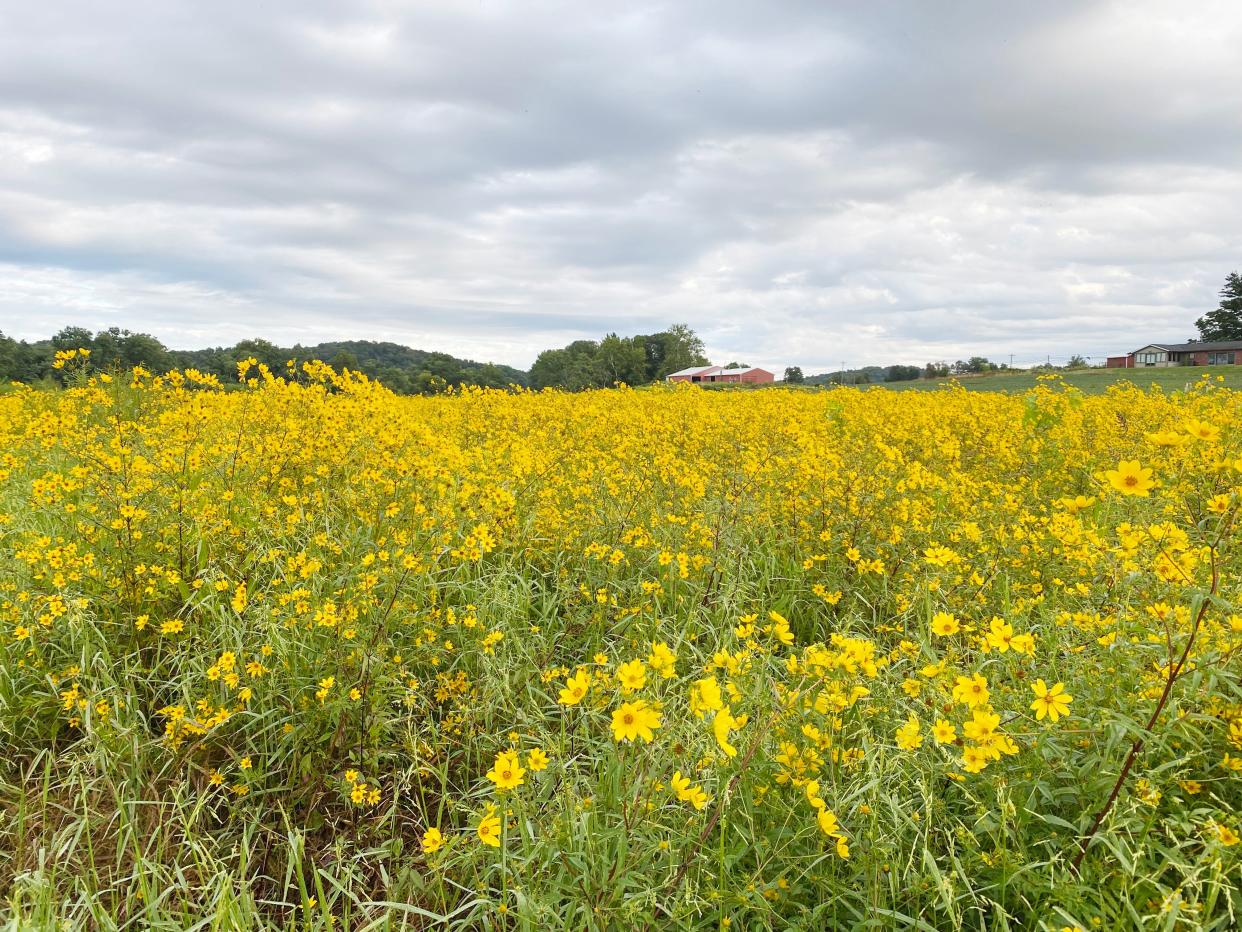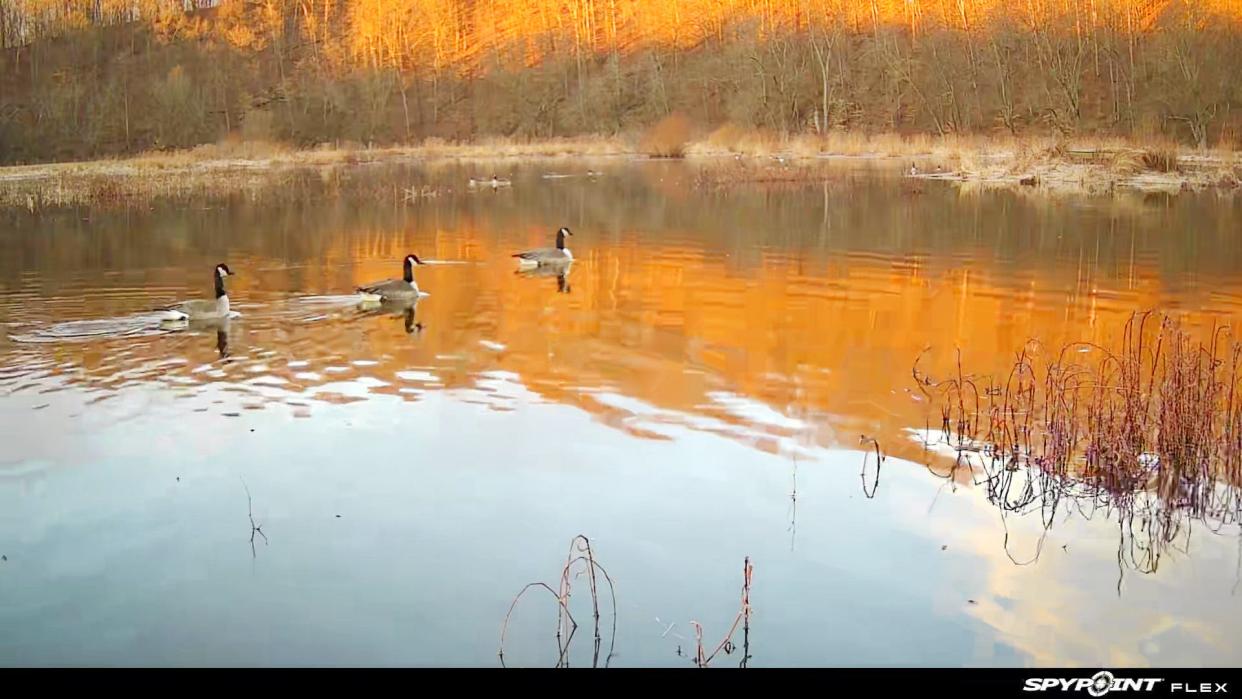Sycamore Land Trust preserves a wetland while adding educational center in Indiana

The purchase of 113 acres along Old Indiana 37 north of Bloomington in 2022 was the beginning of a new venture for Sycamore Land Trust that will ultimately provide a learning center — the Carl Ziegler Wetlands and Education Center — as well as acres of wetlands.
"We really saw an amazing opportunity to keep the house and turn it into an education learning center," said John Lawrence, executive director at Sycamore Land Trust, the Bloomington-based conservation organization that protects land across central and southern Indiana.
Why is this property on Old Indiana 37 special?
The property is within the Beanblossom Creek Conservation Area, which extends from the headwaters of Beanblossom Creek in Brown County through Monroe County to its confluence with the White River on the border of Owen County. Sycamore Land Trust acquired its first property within the conservation area in 1993 and currently has more than 2,200 acres.
The goal is to provide a corridor for wildlife and native plants as well as some recreational trails for people. Not all properties are open to the public.

The new property is along the Beanblossom Creek and mostly within a flood plain. Lawrence said people driving along the road have probably noticed it: "It stands out a little bit."
People traveling north descend from the hilly area into a bottomland where they'll see a big open field with a wetland in the middle, providing ideal habitat for waterfowl and shorebirds and other wildlife. The previous owners constructed the wetlands about 20 years ago, Lawrence said. The wetlands are surrounded by a large field where corn and soybeans are grown.
Before purchasing the property, Lawrence said he was standing on the deck of the house thinking, "Boy, if we don't make it happen, we're going to regret it in five to 10 years."
What made Lawrence confident that the land trust could purchase the house and property were significant donations from Sam Shine Foundation, Raymond Foundation, Alexandra "Sandy" Lynch and Jack Shelton, Steven A. and Kathleen Knight Weller and the Indiana Department of Natural Resources Next Level Conservation Trust.
"That gave us what we needed to take that leap," he said.

"Something that was an immediate question was what would we do with the house," Lawrence said. "Of course, houses are expensive compared to unimproved land. The house has such an incredible view of the wetlands and the area around it."
The goal is to add parking and renovate the interior of the house to make it handicap-accessible and functional as an education center. Converting the residence takes time, Lawrence explained, adding he's been working the architects and engineers and is awaiting final approvals from the state health department as well as area planning committees.
Sycamore Land Trust's other new wetland: Creating wetlands: Sycamore Land Trust builds 3 new areas in Monroe County
Why are wetlands important?
Wetlands have been in the news this past year across the Hoosier state, with various bills discussed and a couple passed into law by the Indiana Legislature, one that opens up more land for development without any safeguards or mitigation (HB 1382) and another that creates incentives to encourage landowners preserve wetlands (SB 246).
Wetlands are some of the most biologically diverse ecosystems and are home to many threatened and endangered plants and animals. Wetlands can be called bogs, fens, swales, marshes or swamps and once covered more than 5.6 million acres in Indiana, or about 25% of the land. Currently only about 4% of land in Indiana are wetlands.
Indra Frank, water policy director for Hoosier Environmental Council, said wetlands are important parts of Indiana's water system as well as critical for many threatened and endangered wildlife species.
An acre of wetland can store between 1 million and 1.5 millions gallons of water, which slows runoff after rains and greatly reduces flooding. Wetlands also act as a filter, improving water quality with its plants and microorganisms purifying the water.
Another benefit is as wetlands store water, some of it slowly soaks into the ground, replenishing water in aquifers that are the underground source of well water.
"That recharge is really important," Frank said, adding that several communities in Indiana currently are having discussions about water storage, looking to other areas to help supply water needed for growing industries. "Even though Indiana is a water-rich state, we're still having conservations," Frank said. "There's not always as much water supply as we'd like."
That was highlighted by the Indiana Wetland Task Force in its final report in September 2022, with participants from many different backgrounds and industries. The report concluded that the cumulative loss of wetlands in Indiana is having a negative effect for Hoosiers.
Before European settlers came into the Hoosier state, about 24% or about 1 out of every 4 acres was wetlands, Frank explained. The Grand Kankakee Marsh was second to only the Florida Everglades in size. But once settlers came to Indiana and began draining land for farming and building, the loss of wetlands began.
An Indiana Department of Natural Resources report from the mid 1990s said the state had lost 85% of its wetlands. Frank expects that has now about a 90% loss.
While it may seem most Hoosiers can't do much to reverse that trend, Frank said every little bit helps. That includes education and conservation, two of the vital actions that Sycamore Land Trust undertakes.
For Sycamore Land Trust, Lawrence said that with more relaxed legislation regarding wetlands in Indiana, "the work that Sycamore (Land Trust) and others do to protect them is all the more important. That’s a reality."
When can people visit the Carl Ziegler Wetlands and Education Center?
Once the renovations to the house are complete, the plan is to have a soft launch for the wetlands and education center and let it grow organically, Lawrence explained.
"We’re going to start off with having programs by invitation," he said. Those invitations will be to members, school groups, the area Audubon societies and such. There will be no official hours for the center when it first opens.
"It's going to be a new indoor space where we can invite the public whenever we want."
Why was the property named for Carl Ziegler?
Carl Ziegler, a former assistant professor with the Germanic studies department at Indiana University, died at the age of 80 in April 2021. He was also director of the Collins Living-Learning Center at IU for a time.
His family contacted Sycamore Land Trust to inquire about potential funding for educational purposes about the time the land trust was purchasing the property along Old Indiana 37.
Because of the "wonderful gift," Lawrence said it was decided to name the center after Ziegler.
Contact Carol Kugler at ckugler@heraldt.com
This article originally appeared on The Herald-Times: Bloomington based land trust preserves wetland, adds education center
